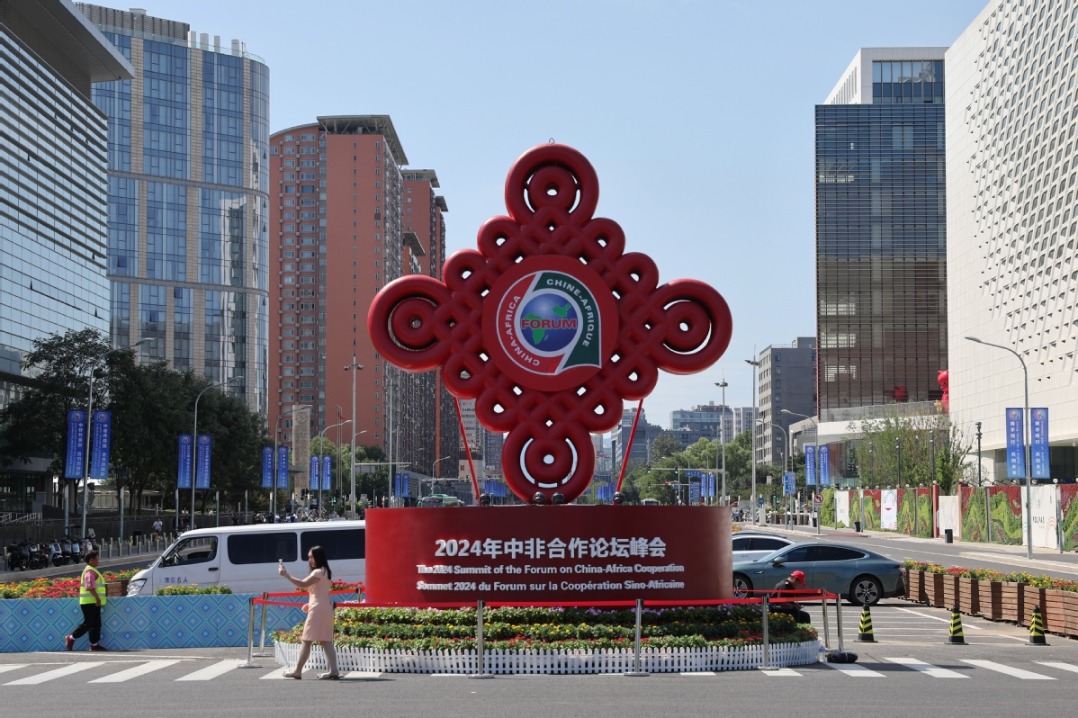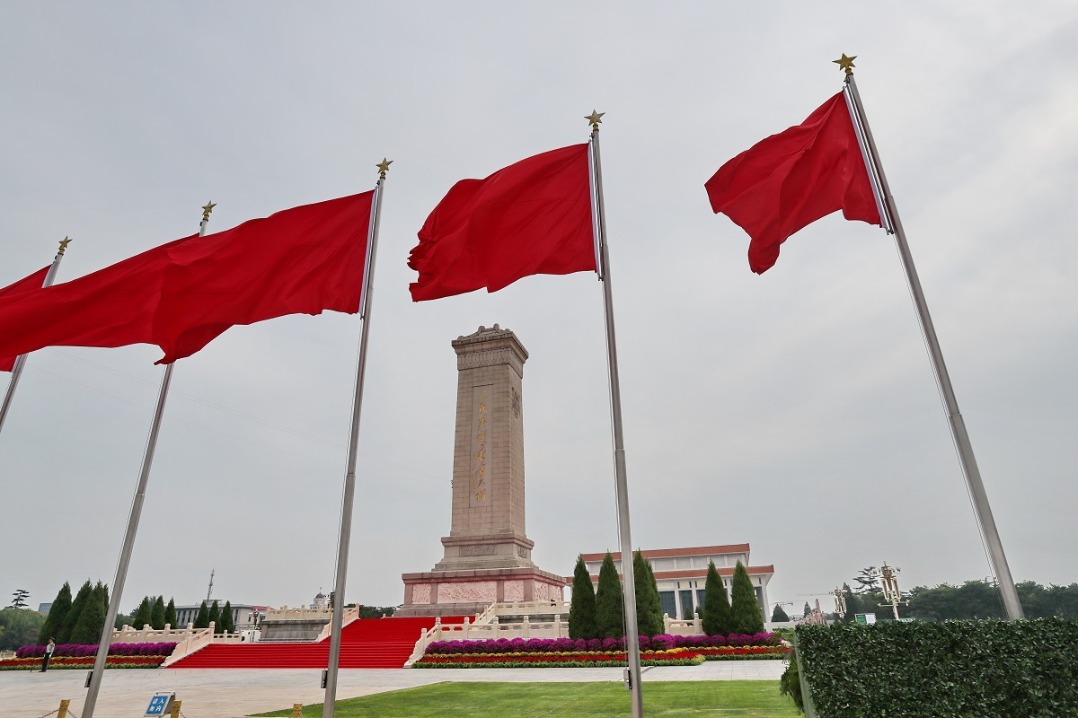China's trade with Mexico, FDI on the rise
Chinese firms represent fastest-growing source of foreign investment, a trend that has accelerated in recent years
By Minlu Zhang in New York | China Daily | Updated: 2024-08-22 09:36
Editor's note: As Chinese companies move their operations to Mexico, they are not just sidestepping tariffs but also sparking a surge in local investment and job creation. China Daily looks at how international politics and economics are intertwining to drive significant shifts in manufacturing and trade.

When you buy drinks from McDonald's, Wendy's, or Dunkin', the straws and cups you use are likely from a Chinese company, while the drinks are either produced in Mexico or the United States and are a product of a complex trilateral trade relationship.
After former US president Donald Trump imposed tariffs on Chinese imports and restricted Chinese investments starting in March 2018, the company making the cups, Fuling Plastics, began to face tariffs on many of its products.
As a result, Fuling moved a factory to Indonesia. Around 2019, it also moved some production to Monterrey, Mexico. And then, Fuling opened a factory in Pennsylvania.
Fuling Plastics is not the only Chinese company moving factories to North America amid rising US-China geopolitical tensions.
Monterrey is the capital of Nuevo Leon, a state in Northern Mexico. Chinese corporations last year were responsible for more than 30 percent of the foreign investment in the state, second only to the US at 47 percent, The New York Times reported.
"A lot of our customers that are close to the border of Mexico can take advantage of competitive pricing and shorter lead times. Not only do we avoid the tariffs coming out of China, but customers within a reasonable distance of Monterrey can enjoy the same type of products manufactured in Mexico at a fairly competitive price," Tom Melchiorre, president of Direct Link USA, a joint venture of Fuling Plastics, told China Daily.
The company currently has about 120 employees in Mexico operating out of a facility of 80,000 square feet (7,432 square meters), but soon it will expand to more than 200,000 square feet and about 400 employees. Only the management is from China, while all other employees are Mexican.
The Ministry of Economy of Nuevo Leon reported that the state received $13 billion in investments from October 2021 to April 2023, creating 88,000 new jobs.

The Mexican Ministry of Economy recorded 378 foreign direct investment announcements in 2023, worth $110.7 billion. The US led with $42.1 billion, followed by China with $11.2 billion.
In 2022, China's direct investment in Mexico rose 48 percent year-on-year. Chinese companies now represent the fastest-growing source of foreign investment in Mexico.
The trend of Chinese investment in Mexico started around 2019 and will likely continue as the US imposes more tariffs on Chinese products and industries.
The increasing tariffs from the US have been imposed on items from China such as solar panels, electric vehicles and EV batteries, which have led to shipping costs rising about six times, Melchiorre said.
"When you're producing commodity products, and shipping costs rise that much, your product is now 15 to 20 percent higher. So, I think it becomes more and more attractive to manufacture in Mexico as we continue to face these challenges," Melchiorre said.
Mexico's exports to the US last year surpassed China's for the first time in two decades, a development linked to the political tensions between China and the US. However, the trade relationship between China and the US is resilient, even under strained conditions.

Researchers analyzed the evolution of the trilateral trade relationship between Mexico, the US and China from 1993 to 2020, and found that, in general, for every 1 percent increase in Mexico's exports to the US, Mexico's imports from China increased by 1.06 percent.
Xuedong Liu, professor of economics and engineering at the National Autonomous University of Mexico, noted that since 1993, about half of the US trade surplus with Mexico has been offset by a growing deficit with China, making Mexico a key assembly hub for North America, and China an influential player in the region's trade.
Cost-effective goods
Mexico chose Chinese products, not for political reasons, but for their high cost-effectiveness and the lack of substitutes from other countries, Liu told China Daily.
"The primary reason is that Mexico's local supply chain is not robust enough to meet all its needs. To increase exports to the US, Mexico must also increase its imports. These imports don't necessarily have to come from China; they could come from other countries," he said.
"However, Mexico ultimately chooses Chinese products due to their competitive pricing. This choice isn't driven by any specific policy or political measure but by market economics.
"Chinese products offer better value for money compared to those from other countries. If this weren't the case, local manufacturers in Mexico would opt for imports from countries like Vietnam, Indonesia or Brazil. However, these countries either lack competitive pricing or a complete supply chain for certain products," Liu added.
The Joe Biden administration in July announced new tariffs on imports of Mexican steel containing Chinese components. The US will now impose a 25 percent tariff on such steel, the same rate imposed on steel from China. Previously, Mexican steel with Chinese components was exempt from duty.

"These tariffs that the United States put in place specifically to try to prevent metals that come from China from entering their country represent a risk for Mexican exports, because part of the exports are produced in China and not in Mexico, and in the short term, it is very unlikely that Mexico will be able to change that so those commodities are produced here," Ana Azuara, commodity markets specialist at Grupo Financiero Base, told BNamericas, an online source of daily business information and intelligence on Latin America.
The tariffs were costly for Mexico, and to compensate for the economic toll, the US and Mexico agreed that steel imported from Brazil that is processed in Mexico and then exported to the US will not be subject to tariffs, Liu said.
"But Brazilian steel is not as cost-effective as Chinese steel. It is currently very difficult to estimate the potential economic impact on Mexico," he said.
"Unlike Vietnam and Malaysia, Mexico has a stronger industrial base (to manufacture its own products), especially after joining the North American Free Trade Agreement (NAFTA), the predecessor to the USMCA, in 1994."
USMCA is a free trade agreement between the US, Mexico and Canada, which replaced NAFTA in 2018.
Still, Mexico faces challenges with its supply chain, lacking intermediate and capital goods, which limits its export capacity. So, to increase exports, Mexico needs to increase imports, Liu said.
Mexico is now importing more products from China which used to come from North America. In 2019, 17.7 percent of Mexico's imports in electronics such as mobile phones, auto parts and motor vehicles came from China, sectors where the US was traditionally the main supplier, according to Americas Quarterly, a nonprofit publication.
Some believe that in the contest between the two major powers, the US and China, Mexico has not yet found a strategy to address the increasingly complex trilateral trade relationship. Caught between US-China trade dynamics, Mexico's relationship with China has become more politically complicated.

In January 2023, the US, Mexico and Canada established a committee to substitute imports from Asia with products manufactured in North America.
Before 2021, trade between China and Mexico was primarily driven by mutual benefit and market principles, Liu said.
Since 2023, bilateral trade between China and Mexico "has not only been influenced by economic and market factors but also political ones", Liu said. He said that it is a new characteristic of the trade relationship.
Mexico welcomes Chinese investment. In 2019, ahead of his visit to China, former Mexican foreign minister Marcelo Ebrard said the country wants to deepen economic ties with China by increasing its exports and attracting more Chinese investment.
Ebrard told reporters via a video link from the Group of 20 summit in Osaka, Japan, in 2019 that he would be prioritizing the expansion of business ties during his visit to China.
"What we're interested in is increasing Mexico's presence in China, Mexico's capacity to export to China, and China's investments in Mexico," he said, according to Reuters.
"The structural reasons that are bringing capital to Mexico are here to stay," said Juan Carlos Baker Pineda, Mexico's former vice-minister for external trade. "I have no indication that the trade war between China and the US is going to diminish any time soon.
"While the Chinese origin of the capital coming into Mexico may be uncomfortable for the policies of some countries, according to international trade legislation, those products are, to all intents and purposes, Mexican," the BBC quoted him as saying.
Citing examples
An example of such products is Mexico's auto manufacturing industry. In 2023, Tesla announced plans to establish a factory in Mexico, which attracted a large number of suppliers to the country.
Many of those suppliers were already producing components or raw materials for Tesla in China. The Chinese auto parts makers are rapidly setting up plants on the outskirts of Monterrey, where Tesla plans its manufacturing plant.
While "Made in Mexico" is gaining ground in the North American market, Chinese companies still hold an advantage due to their stronger technical and supply chain foundations, experts said.
"Mexico now aims to strengthen local supply chains and increase production value, but this has been a long-standing issue. While China has invested heavily in technology and research over the past 50 years, Mexico has not, making it difficult to achieve these goals quickly," Liu said.
"Most of the companies going to Mexico are bringing skills that we don't currently have in Mexico," Jose Luis Enciso, business intelligence director for Keno Consulting in Beijing, told China Daily. "This will benefit us by introducing new skills and creating new suppliers. It will also benefit the Chinese investors because they will gain access to a new market and become more efficient."
Meanwhile, it is not easy for Chinese companies, capital and technology to enter the Mexican market.
Going to Mexico "has helped reduce lead times, which is an advantage for our customers, not having such a long lead time coming from China. You're cutting your lead time from 100 days to 30 days to two weeks. So, there are a lot of advantages to producing in Mexico," Melchiorre said.
There also are some disadvantages. Resin, the raw material for Melchiorre's company's products, is more expensive in Mexico, he said. Compared with China, the cost of labor also is higher in Mexico. And shipping is very expensive, especially when the company produces and ships throughout North America.
"The further north we go, the more expensive and less competitive we are out of Mexico," Melchiorre said.
Cultural differences are another issue for Chinese companies operating in Mexico. There are not many Latin Americans who speak Chinese, and not many Chinese who have Spanish skills and industry experience.
That can lead to misunderstandings and make it difficult for companies to understand the local context, said Enciso, whose company provides consulting services for Chinese businesses entering Mexico.
While Mexican companies are accustomed to working with European and US firms, integrating Chinese companies can be challenging. That is due to the need for local expertise in engineering, legal and accounting services, which also must align with the practices of Chinese companies, Enciso added.
Enciso, who also served as minister counselor for trade affairs at Mexico's embassy in China, remains positive about the future development of economic and trade relations between the two countries.
"While we don't have a free trade agreement in place, Mexico and China have developed a very good economic and policy dialogue over the past 10 years," he said.
The recent efforts to strengthen ties between China and Mexico involve multiple sectors.
China Southern Airlines announced a direct route from Shenzhen to Mexico City in May, and Hainan Airlines resumed direct flights between Beijing and Tijuana and Mexico City in July.
The connectivity is really going to help enhance people-to-people exchanges, Enciso said.
Several major ocean carriers have opened new China-to-Mexico trade routes in recent months. At the government level, Mexican Tourism Secretary Miguel Torruco visited China in July, which led to support from both governments to continue strengthening bilateral relationships.
"Certainly, the global policy environment will continue to evolve, unfortunately, with more protectionist measures and security concerns. However, I believe it's only a matter of time until common ground is found to recognize the positive aspects of increasing trade and investment," Enciso said.
























